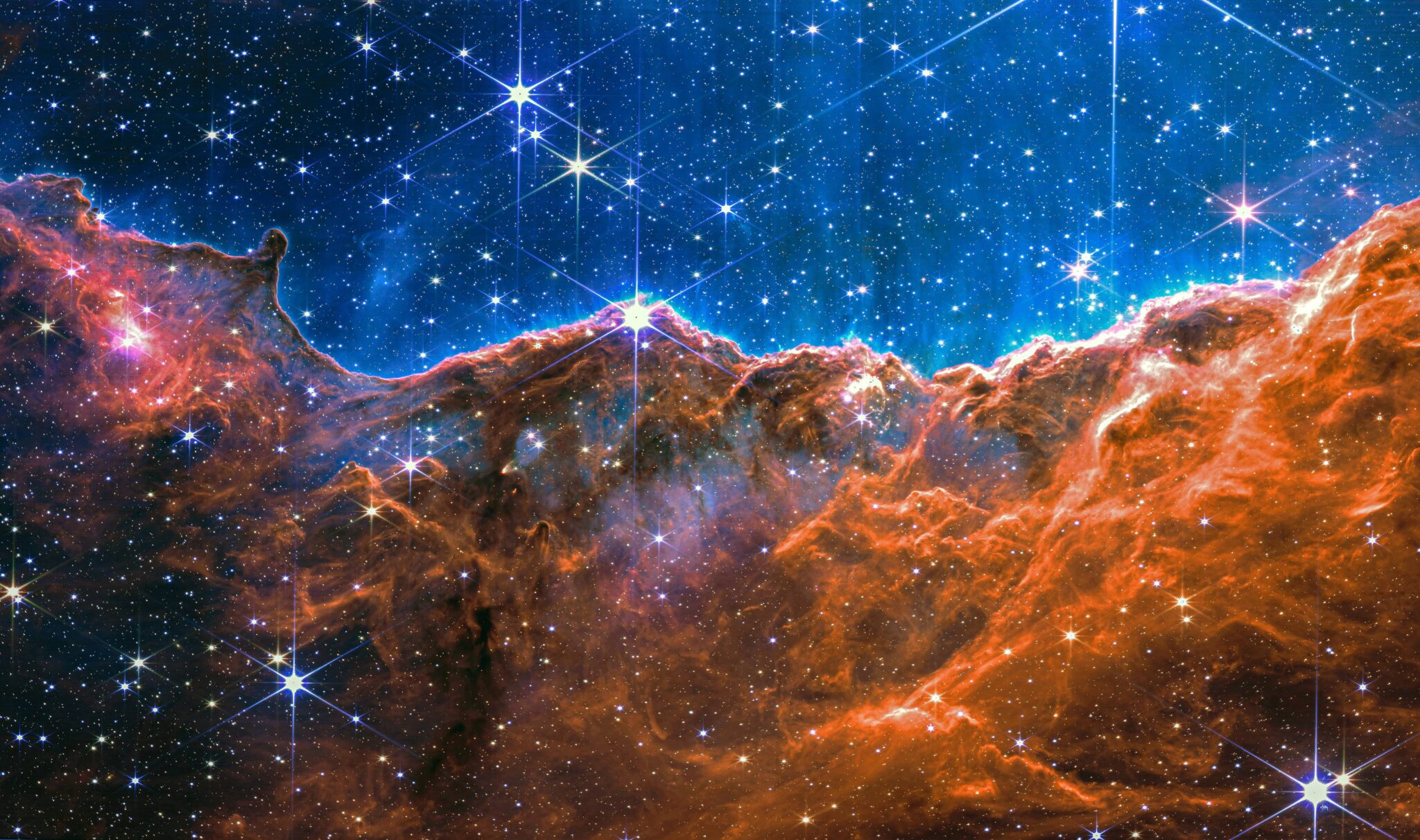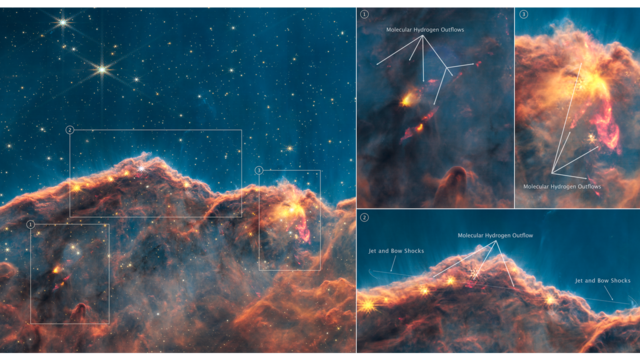Thanks to the advanced instruments of the James Webb Space Telescope, NASA scientists have taken a closer look at one of the most attractive images of the observatory. What they found there surprised them greatly.

Astronomers have sent James Webb infrared instruments to the so-called Cosmic Cliffs in the massive Carina nebula, or rather, to the NGC 3324 star cluster. The resulting images were in the first series of observations that we saw back in July. But now researchers have conducted a deeper analysis of the data and found in the images a whole crop of newborn stars at a rare stage of development.
The Hubble telescope has also observed this corner of the Universe in the past. But James Webb’s infrared instruments made it possible for the first time to “penetrate” through clouds of dust and gas to detect powerful jets of matter escaping from young luminaries.

“Such jets indicate an interesting stage in the process of early star formation. They occur only for a short period of time when the protostar is actively increasing, absorbing the surrounding material,” explained researcher Nathan Smith from the University of Arizona.
The window of the early active star formation process is only a few thousand years out of the several million required for a star to fully form. This is similar to how Hubble allowed us to observe the stellar “nursery”, but James Webb opened the door of this room to take a closer look at how newborn stars grow and develop. Researchers say this discovery can usher in a new era of understanding how stars like our Sun form and how this radiation affects the development of nearby planets.
Earlier we reported that James Webb showed more photos of the Pillars of Creation after the failure.
According to Monthly Notices of the Royal Astronomical Society
Follow us on Twitter to get the most interesting space news in time
https://twitter.com/ust_magazine

